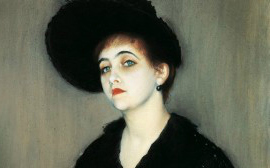Whilst conducting his research, browsing through archival material and commiserating with biographers and scholars, Thiel would happen upon a curator (museum unknown) who presented the documentarian with a behemoth manuscript. What happened next is so serendipitous it toes the indistinct line between the fantastical and the reality of bizarre and fortuitous happenstance.
Legend has it Thiel set the manuscript aside – to revisit at an appropriate time during his research process – only to later peruse the material earlier than expected whilst idling away the hours at a local auto repair shop.
The filmmaker found himself in a state of delirium: cradled in his hands was a massive, 400 page sketch for an opera by Schubert, “Sakuntala” (D 701 in the Deutsch catalogue), unfinished save for roughly 50 percent of the vocal parts, which the composer – not generally known for writing operas – penned in 1820 after having been inspired by a local adaptation of a Sanskrit play “Sacontalá” (The Fatal Ring) by the 5th century Indian writer Kālidāsa, which had been translated into German from it’s original form “Shakuntala” by Sir William Jones in 1789. The play, which had long remained a sensation in the East, now began making the rounds in the West as interest in Indian culture peaked among literate sects in the waning years of the 18th century.
Shakuntala is a Hindu mythological epic of love and rejection, centering around the works’ titular character Shakuntala, and her marriage to the much absorbed king Dushyanta (the destroyer of evil), who becomes so embroiled in affairs of state, he neglects his husbandly duties, much to the chagrin of Shakuntala. The maligned wife, delirious with grief, forgets to serve her husband and king supper, at which point an outraged sage casts upon the couple a curse, wherein king Dushyanta’s memories of the couple’s union will be erased.
The tale (which despite it’s ominous prologue does conclude quite amiably) was beloved by western literary icons of the ilk of Johann Wolfgang von Goethe who had witnessed a staging of the play by Schubert contemporary Johann Philipp Neumann (The Recognition of Shakuntala). The author was so moved, he published an epigram about Shakuntala in 1791 and is believed to have borrowed elements from the works prologue for his epic tale, Faust, completed in full in 1831.
 |
| Shakuntala (R) Despondent, Raja Ravi Varma |
Although Schubert’s operatic adaptation had been heard only once previously (in Vienna in 1971), Thiel had the distinction of carrying the incomplete work to the Munich Philharmonia Orchestra, who filled in the gaps. By 1979, Shakuntala appeared on the stage, in a ballet performance at Munich, which the film director recorded for German television.
Schubert’s original score, which contained somewhat sparse sketches for accompaniment and possessed barren stretches where music should have filled the void, was deemed somewhat of a challenge to interpret, hindering scholars with it’s gothic text. Through the efforts of Danish composer Karl Aage Rasmussen and music librarian at Austria Thomas Aigner, who drew upon the recently discovered long lost script for Neumann’s original play, a "full" adaptation of the work was scored and later made it's world premiere on the Naxos Record label in 2008.
That collaborative effort, however, will not be the version set to premiere in India (Lotus Temple October 2, 2018 in New Delhi). Professor Gerald Wirth, President and Artistic Director of the esteemed Vienna Boys Choir, explained to local press of his intention to stay as close to the vest as possible in conducting Schubert’s neglected work – orchestrating, yet not adding anything new to the score, thus leaving the finished version incomplete, just as Schubert had left it prior to his death in 1828. It will be presented in a concert format.
Reprisals will occur in Kolkata on October 4 at the Kala Mandir Auditorium, and at the Royal Opera House in Mumbai on October 6.
Listen below to the 2008 world premiere recording of Schubert’s Shakuntala published by Naxos(Rasmussen’s reconstruction). The Kammerchor Stuttgart and Deutsche Kammerphilharmonie Bremen perform under the baton of Frieder Bernius. *Be sure to listen for the gorgeous second act Quartet, Rosenzeit der Freuden! at 1:00:30):
Footnotes:
- News Article - The Hindu
- Rose.





















